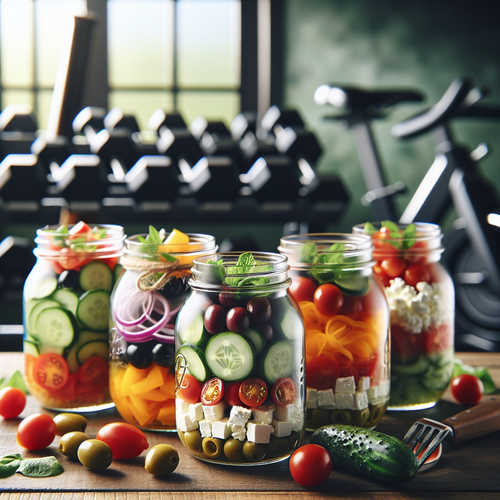The Ultimate Guide to Keto Smoothies for Weight Loss
Feeling overwhelmed by the keto diet? You want fast, delicious meals for weight loss, but you’re short on time and terrified of making simple mistakes that could stall your progress. It’s a common challenge: finding meals that are genuinely keto-compliant, quick to prepare, and satisfying enough to keep you on track. You need a solution that fits your busy lifestyle without demanding hours of complex meal prep or a deep understanding of nutritional science.
This guide goes beyond a simple list of recipes. We’ve created a complete blueprint for making keto smoothies a foolproof, affordable, and sustainable part of your weight loss journey. Drawing on established nutritional science and practical, real-world experience, we’re not just giving you recipes—we’re giving you a system.
We’ll cover the science of why these smoothies are so effective, provide a library of delicious keto smoothie recipes for weight loss, reveal the common pitfalls that can derail your diet, and give you the exact strategies for meal prepping and budgeting for long-term success. Consider this your definitive resource for mastering the art of the keto smoothie.
Table of Contents
- The Science of Success: Why Keto Smoothies Work for Weight Loss
- The Foolproof Keto Smoothie Recipe Library
- Avoiding the Pitfalls: Common Keto Smoothie Mistakes & How to Fix Them
- Systems for Sustainable Success
- Frequently Asked Questions (FAQ)
- Conclusion
The Science of Success: Why Keto Smoothies Work for Weight Loss
To successfully integrate smoothies into your keto lifestyle, it’s essential to understand the principles that make them so effective. It isn’t just about blending low-carb ingredients; it’s about creating a nutritionally complete meal that supports your body’s metabolic state and keeps you full and energized for hours.
Achieving Ketosis: Your Body’s Fat-Burning State
The cornerstone of the ketogenic diet is achieving a metabolic state known as ketosis. In simple terms, when you drastically reduce your carbohydrate intake, your body runs out of its primary fuel source (glucose) and begins burning stored fat for energy instead. This process produces molecules called ketones, which your brain and body can use for fuel. A properly formulated keto smoothie is a powerful tool for reaching and maintaining this fat-burning state.
According to research published by the National Center for Biotechnology Information (NCBI), the ketogenic diet’s effectiveness for weight loss stems from its ability to reduce appetite and increase fat oxidation. By providing high amounts of healthy fats, moderate protein, and minimal carbohydrates, low carb smoothies for weight loss deliver everything your body needs without the glucose spike that would otherwise halt ketone production. They serve as a perfect meal replacement that aligns with the core principles of the diet, helping you stay in ketosis effortlessly.
The Core Components of the Perfect Keto Smoothie
Crafting the perfect keto smoothie is a science. Each ingredient plays a crucial role in balancing macronutrients, providing sustained energy, and ensuring you feel satisfied. For the best keto smoothie for beginners, focus on these five building blocks:
Healthy Fat Source: This is the foundation of your smoothie and the primary source of energy. It promotes satiety, keeping you full for longer.
- Examples: Avocado, MCT oil, coconut cream, almond butter, chia seeds, flax seeds. A keto avocado smoothie recipe is a classic choice for its creamy texture and healthy monounsaturated fats.
Protein Source: Protein is vital for muscle maintenance and also contributes to feeling full.
- Examples: Unsweetened whey or collagen protein powder, Greek yogurt (in moderation), or dairy-free protein powders.
Low-Carb Liquid Base: This determines the consistency of your smoothie without adding unnecessary sugars or carbs.
- Examples: Unsweetened almond milk, unsweetened coconut milk, or water.
Fiber and Greens: Essential for digestive health and packed with micronutrients. Leafy greens add volume and nutrients with minimal carbs.
- Examples: Spinach, kale, chia seeds, flax seeds, psyllium husk.
Keto-Friendly Flavor: Add taste without the sugar.
- Examples: Berries (strawberries, raspberries, blueberries in small amounts), monk fruit sweetener, erythritol, stevia, vanilla extract, or unsweetened cocoa powder.
| Component | Role in the Smoothie | Examples |
|---|---|---|
| Healthy Fat | Energy & Satiety | Avocado, MCT Oil, Almond Butter, Coconut Cream |
| Protein | Muscle & Fullness | Collagen Powder, Whey Protein, Plant-Based Protein |
| Liquid Base | Consistency | Unsweetened Almond Milk, Water, Coconut Milk |
| Fiber/Greens | Digestion & Nutrients | Spinach, Kale, Chia Seeds, Flax Seeds |
| Flavor | Taste (No Sugar) | Berries, Stevia, Monk Fruit, Cocoa Powder |
The Foolproof Keto Smoothie Recipe Library
Here is a collection of simple, delicious, and varied keto smoothie recipes designed to meet different needs. Each recipe is crafted to be macro-friendly, satisfying, and easy to prepare.
Quick Keto Breakfast Smoothies
For those hectic mornings, a quick keto breakfast smoothie serves as the perfect grab-and-go meal. These recipes are designed to be a complete keto smoothie meal replacement, keeping you full until lunch.
Classic Chocolate Peanut Butter Smoothie
- 1 cup unsweetened almond milk
- 1 scoop chocolate protein powder
- 2 tbsp peanut butter (or almond butter)
- 1 tbsp chia seeds
- 1 cup ice
- Optional: 1 tbsp MCT oil for extra energy.
- Instructions: Blend all ingredients until smooth.
Vanilla Berry Cream Smoothie
- 1 cup unsweetened coconut milk
- 1 scoop vanilla protein powder
- 1/4 cup mixed berries (fresh or frozen)
- 1/2 avocado
- 1 cup ice
- Instructions: Blend all ingredients until smooth and creamy.
Energizing Keto Green Smoothies
Get your daily dose of nutrient-dense greens with these energizing smoothies. They are a fantastic way to boost your vegetable intake and are excellent examples of high fiber low carb smoothies.
Avocado Green Power Smoothie
- 1 cup water or unsweetened almond milk
- 1 large handful of fresh spinach
- 1/2 avocado
- 1 scoop unflavored or vanilla collagen powder
- 1 tbsp ground flaxseed
- Juice of 1/2 lime
- Instructions: Blend until silky smooth for a top-tier keto green smoothie for weight loss.
Minty Green “Shamrock” Shake
- 1 cup unsweetened almond milk
- 1 handful spinach
- 1 handful fresh mint leaves
- 1 scoop vanilla protein powder
- 2 tbsp full-fat coconut cream
- 1 tbsp chia seeds
- Instructions: Blend until smooth for a refreshing treat.
Dairy-Free Delights
For those who are lactose intolerant or prefer to avoid dairy, these dairy-free keto smoothie recipes use plant-based milks, creams, and protein powders without sacrificing flavor or creaminess.
Creamy Coconut & “Caramel” Smoothie
- 1 cup unsweetened coconut milk
- 1 scoop dairy-free vanilla protein powder
- 2 tbsp almond butter
- 1 tbsp MCT oil
- A pinch of sea salt
- Instructions: Blend until creamy. The combination of almond butter and salt gives it a salted caramel flavor.
Triple Chocolate Avocado Mousse Smoothie
- 1 cup water
- 1/2 avocado
- 1 scoop dairy-free chocolate protein powder
- 2 tbsp unsweetened cocoa powder
- 1 tbsp chia seeds
- Sweetener (monk fruit or stevia) to taste
- Instructions: Blend until thick and decadent, like a chocolate mousse.
Avoiding the Pitfalls: Common Keto Smoothie Mistakes & How to Fix Them
While keto smoothies seem simple, several common mistakes can sabotage your progress, kick you out of ketosis, or lead to nutrient deficiencies. Understanding and avoiding these pitfalls is a crucial part of your long-term success.
The Hidden Carb & Sugar Trap
The most common mistake is accidentally adding too many carbs. Many “healthy” ingredients are loaded with hidden sugars that will quickly derail your keto efforts. Be wary of fruits like bananas and mangos, flavored yogurts, honey, maple syrup, and even some plant-based milks that contain added sugars.
Making easy keto smoothie recipes means being a vigilant label-reader. Always choose unsweetened milk alternatives, plain full-fat yogurt (if using), and low-glycemic sweeteners. According to the Harvard T.H. Chan School of Public Health, one of the key challenges of the ketogenic diet is its strict nutrient requirements. Diligence is required to avoid hidden carbohydrates in processed foods and even seemingly innocent ingredients. Stick to low-carb fruits like berries in very small quantities (e.g., a quarter cup) to add flavor without exceeding your daily carb limit.
Gluconeogenesis: When Too Much Protein Becomes a Problem
While protein is essential, it’s possible to have too much of a good thing on a ketogenic diet. When you consume excessive amounts of protein relative to your fat intake, your body can convert the excess amino acids into glucose through a process called gluconeogenesis. This can raise your blood sugar and potentially knock you out of ketosis, undermining the metabolic advantage you’re working to maintain.
To avoid this, ensure your keto smoothie recipes for weight loss are fat-dominant. A proper keto macro split is typically around 70% fat, 25% protein, and 5% carbs. In a smoothie, this means focusing on your healthy fat source (avocado, MCT oil, nut butter) and using only one standard scoop of protein powder. Don’t double up on protein unless you are specifically following a post-workout protocol advised by a nutritionist.
Electrolyte Imbalances and the “Keto Flu”
When you switch to a ketogenic diet, your body flushes out water and, along with it, essential electrolytes like sodium, potassium, and magnesium. This depletion is a primary cause of the “keto flu”—symptoms like headaches, fatigue, and muscle cramps that can occur during the initial adaptation phase.
As UCSF Health explains in their guide, managing side effects is key to sustainability. Smoothies offer a perfect opportunity to replenish these vital minerals.
- Sodium: Add a generous pinch of high-quality sea salt or Himalayan pink salt to your smoothie. It won’t affect the taste but makes a huge difference.
- Potassium: Incorporate potassium-rich, keto-friendly foods like avocado and spinach.
- Magnesium: Leafy greens, chia seeds, and almonds are good sources. You can also add a scoop of a sugar-free magnesium citrate powder to your evening smoothie.
Systems for Sustainable Success
Long-term success on any diet isn’t about willpower; it’s about building sustainable systems. Integrating keto smoothies into your life requires a plan for both preparation and budgeting, ensuring it remains an easy and affordable choice.
The Weekly Keto Smoothie Meal Prep System
The best way to ensure you stick with your smoothie habit is to eliminate the daily friction of gathering ingredients. A weekly meal prep system is the solution. By pre-portioning your smoothie ingredients, you can have a perfect keto meal ready to blend in under 60 seconds.
Step-by-Step Freezer Pack Method:
- Choose Your Recipes: Select 5-7 smoothie recipes for the week.
- Gather Your Ingredients: Buy everything you need for the week.
- Label Freezer Bags: Label Ziploc or reusable silicone bags with the recipe name and date.
- Portion the Solids: In each bag, add all the solid ingredients for one smoothie: the protein powder, seeds (chia/flax), sweeteners, and frozen fruit or greens. For avocado, you can add it fresh right before blending or use frozen avocado chunks.
- Freeze: Lay the bags flat and freeze them.
- Blend & Go: When you’re ready for a smoothie, simply empty the contents of one pack into your blender, add your liquid base (and any fresh avocado or oils), and blend.
To help you get started, we’ve created a comprehensive planner. You can download our FREE ‘Weekly Keto Smoothie Meal Prep Plan’ which includes a shopping list and step-by-step instructions.
Keto on a Budget: Sourcing Your Ingredients
A ketogenic diet can seem expensive, but with smart shopping, your smoothie habit can be very affordable. The key is to source your ingredients wisely.
- Buy Produce in Bulk and Frozen: Frozen berries, spinach, and avocado chunks are often cheaper than fresh, and they eliminate spoilage. They also make your smoothie colder and thicker.
- Shop Around for Protein Powder: Don’t just buy the first tub you see. Compare prices online and look for sales or subscription discounts. Buying a larger tub is almost always more cost-effective per serving.
- Compare Healthy Fats: While MCT oil is popular, it can be pricey. A half-avocado or a tablespoon of coconut oil can provide healthy fats at a lower cost. Nut butters are also cost-effective when bought in larger containers.
- Use Water as a Base: Unsweetened almond milk is a great choice, but filtered water is free and works perfectly well as a liquid base, especially in flavor-packed smoothies.
As the American Medical Association (AMA) notes, making a diet sustainable is crucial for long-term health benefits. By planning your meals and shopping smart, you can adhere to a healthy keto lifestyle without straining your budget.
Frequently Asked Questions (FAQ)
Can I have a keto smoothie every day?
Yes, absolutely. A well-formulated keto smoothie can serve as a nutritionally complete meal. As long as you are using varied ingredients to ensure a broad spectrum of nutrients over time (e.g., rotating between green smoothies and berry smoothies), it’s a perfectly healthy and convenient daily meal replacement.
What are the best sweeteners for keto smoothies?
The best sweeteners are those with a zero glycemic index, meaning they don’t raise blood sugar. Top choices include monk fruit, erythritol, and stevia. Allulose is another excellent option. Avoid sweeteners like maltitol, which can impact blood sugar, and of course, traditional sugars like honey, maple syrup, or agave nectar.
How can I make my keto smoothie thicker without bananas?
Achieving a thick, creamy texture without high-carb bananas is easy. The key is using a combination of a powerful fat source and a fiber-rich thickener. The best options are:
- Avocado: Half an avocado will make any smoothie incredibly creamy.
- Chia or Flax Seeds: When blended, they create a thicker, gel-like consistency.
- Xanthan Gum: Use sparingly (1/4 to 1/2 teaspoon) as this food-grade thickener works wonders.
- More Ice & Frozen Ingredients: Using frozen berries, spinach, or avocado instead of fresh will result in a much thicker, frostier smoothie.
Conclusion
Success with keto smoothies is about more than just finding a few good recipes. It’s about building a comprehensive system. By understanding the science behind ketosis, you empower yourself to make smart choices. By learning to avoid common pitfalls like hidden carbs and electrolyte imbalances, you protect your progress. And by implementing sustainable systems for meal prep and budgeting, you transform a diet into a seamless and enjoyable lifestyle. This guide provides that complete framework, removing the guesswork and anxiety from the equation.
A well-made keto smoothie is far more than a quick meal—it’s a powerful and versatile tool for achieving your weight loss goals without sacrificing taste, convenience, or your budget. It’s your daily guarantee of a delicious, satisfying, and perfectly compliant meal that will keep you on the path to success.
Ready to start your foolproof keto journey? Download our FREE ‘Weekly Keto Smoothie Meal Prep Plan’ and explore our full library of easy keto recipes today!








